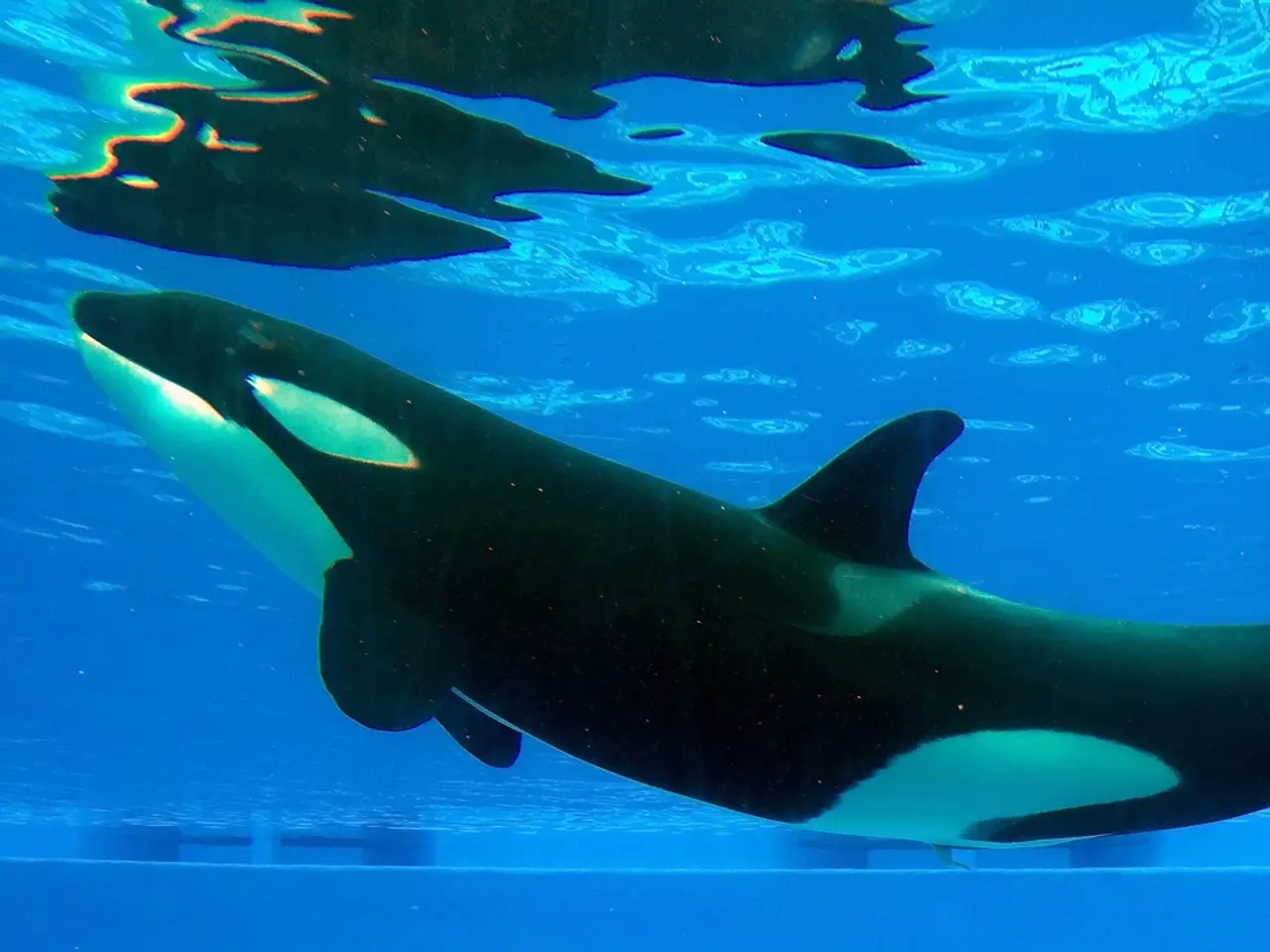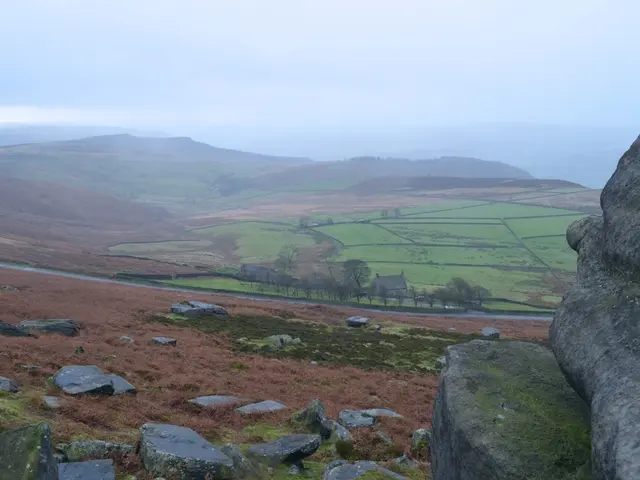Whale Photographer's Tale: Unraveling the Secrets Behind the Iconic Image
Photographing Feeding Bryde's Whales Underwater: A Guide
In the waters off the coast of the Canary Islands, 2013 was a bountiful year for sea life. Schools of Mackerel filled the ocean, attracting a variety of marine creatures, including Spotted Dolphins, Yellowfin Tuna, Albacore Tuna, and three colossal Bryde's Whales. Francis Pérez, an underwater photographer, economist, and marine biology enthusiast, was determined to capture these majestic creatures while they were feeding.
To photograph these fast-moving subjects in cloudy conditions without the use of a strobe, careful planning and the right camera settings are essential. Here's a guide to help you capture these moments effectively:
Camera Settings
To freeze the motion of the whales, use a shutter speed of at least 1/1000th of a second. Balance this with an ISO of around 800 to 1600 to ensure enough light without introducing too much noise. An aperture between f/2.8 and f/5.6 should provide a good balance between depth of field and light intake.
Camera and Equipment
A full-frame or high-end APS-C camera capable of handling high ISOs with minimal noise is ideal. A wide-angle lens (between 10-24 mm or similar) is suitable for capturing the whales and their surroundings. A high-quality underwater housing that allows for smooth operation of your camera's controls is essential. Position yourself for optimal natural light penetration, often during peak sun hours or using a pool of sunlight if available.
Tips for Success
Position yourself where you can predict the whales' movement based on their feeding patterns. Be patient and prepared to wait for the right moment, as feeding whales can be unpredictable. Always prioritize safety and never interfere with the whales or their habitat.
Additional Considerations
Plan your dive carefully with a guide who knows the area and can help you find feeding whales. Always follow local regulations and ethical guidelines when photographing wildlife to avoid disturbing the animals.
On Tenerife's south coast, there is a permanent population of Pilot Whales and Dolphins. Every year, gigantic whales, especially Bryde's Whales, are seen passing along the coast of the Canary Islands, making it one of the best places in the world for viewing marine mammals.
For more of Francis' underwater photography, visit www.uwatercolors.com. The challenge was to photograph one of the giant whales attacking the ball of mackerel, a moment that required careful planning and the right camera settings. With these tips, you too can capture stunning images of feeding Bryde's whales underwater without using a strobe, even in cloudy conditions.
- In the Canary Islands, Francis Pérez planned to photograph Bryde's Whales feasting on schools of Mackerel, attracting various marine life.
- To capture the whales' motion without a strobe, Franz used a shutter speed of at least 1/1000th of a second and an ISO of around 800 to 1600.
- For the aperture, Francis chose a setting between f/2.8 and f/5.6 to balance depth of field and light intake.
- To effectively snap these moments, a full-frame or high-end APS-C camera with excellent high ISO performance is recommended, coupled with a wide-angle lens between 10-24 mm.
- Underwater gear includes a high-quality housing for smooth camera control and positioning for optimal natural light penetration, often during peak sun hours or using a sunlit pool.
- Predict the whales' movement based on feeding patterns, be patient, and wait for the opportune moment toclick the perfect shot.
- Since feeding whales can be unpredictable, prioritize safety and never interfere with the whales or their environment.
- Planning a dive with a knowledgeable guide who can help find feeding whales is advisable, following local regulations and ethical guidelines when photographing wildlife.
- Tenerife's south coast boasts a permanent population of Pilot Whales and Dolphins, making it an ideal destination for observing marine mammals, including Bryde's Whales that traverse the Canary Islands annually.






